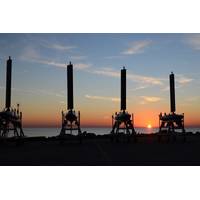
Autonomy: Sun, Sail & Subsea – Not a Holiday, but a Hybrid UxV Platform
and modelling of these potentially harmful cells and toxins, reaching offshore areas using an autonomous vehicle in weather conditions too extreme for small boats. That year, the firm was also made a major step into the defence market, winning a contract to deliver six of its vehicles to the U.S. Department of Homeland Security.Surface-subsurface technology developmentThere’s been a lot of work across a number of areas to get to where the company is today. “There are a lot of components on surface sailing vessels that work perfectly, such as an anemometer,” says Decker. “But
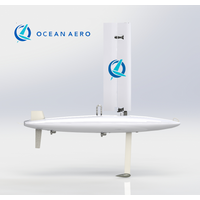
Ocean Aero to Supply Vehicles for Homeland Security
Ocean Aero, Inc. announced it signed a multimillion-dollar agreement to deliver a variety of the company’s autonomous underwater and surface vehicles (AUSV) models to the U.S. Department of Homeland Security (DHS) Science and Technology Directorate (S&T) for a research, evaluation and testing program.Ocean Aero will deliver a mix of its Navigator and Discovery models and working closely with DHS and other program participants—the U.S. Coast Guard (USCG), U.S. Customs and Border Protection (CBP), The University of Southern Mississippi, the U.S. Naval Research Laboratory (NRL), and
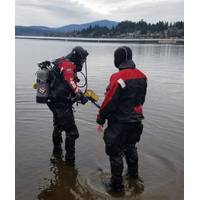
JW Fishers’ Pulse 8X Continues to Outperform
is the JW Fishers Pulse 8X underwater metal detector.The Pulse 8X is JW Fishers’ leading underwater metal detector and has been a staple tool for professional divers for the past 32 years. In 2014, it was named the #1 underwater metal detector by an independent study performed by the U.S. Department of Homeland Security. The P8X was compared to seven other leading detectors on the market and found to be the most economical, effective, and reliable tool for the job. The P8X comes with everything you need to search both on land and submerged to a depth of 200’. The unit comes equipped
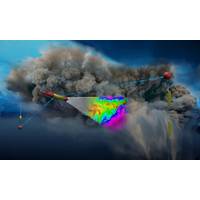
LRAUV: Arctic Oil-Spill-Mapping Robot Put to the Test
As commercial shipping and energy activities picks up in the Arctic region, the prospect of accidental oil spills in this pristine environment remain a concern. In response, the U.S. Department of Homeland Security (DHS) is taking the lead – through the U.S. Coast Guard – to develop a subsea robotic system to map and report on spills.“Because of ice coverage and the tyranny of distance, it is difficult to get resources and assets up in the Arctic in a quick manner,” said Kirsten Trego, Executive Director of the Coast Guard’s Interagency Coordinating Committee on Oil
MTS Tech Breakfast: Maritime Cyber Security
a panel that includes: Major General Michael S. Groen, Joint Staff Director Intelligence, J2 Brian Burns, Deputy Assistant Commandant, C4 & Info Technology, U.S. Coast Guard John Felker, Director, National Cybersecurity and Communications Integration Center, U.S. Department of Homeland Security Dr. Daniel Ragsdale, Director, Cybersecurity Center & Professor of Practice, Computer Science & Engineering, Texas A&M University The breakfast is free of charge for members. The December Technology Innovation Breakfast is scheduled for
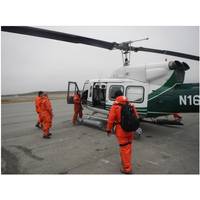
USCG Evaluates Comms Equipment in Alaska
exercise includes Mobile Ad Hoc Network radios and digital troposcatter technology which could allow first responders to establish voice and internet connections between the Regional Command Centers in Juneau and Anchorage in the event of a mass rescue event. NICS is a web-based system developed by the Department of Homeland Security in collaboration with the Massachusetts Institute of Technology’s Lincoln Laboratory and the Coast Guard R&D Center. In addition to streamlining the paper-intensive Incident Command System process, NICS allows first responders to chat directly with decision-makers
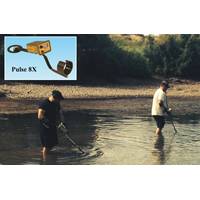
Homeland Security Selects Top Underwater Metal Detector
JW Fishers Pulse 8X has been rated the best underwater metal detector by the U.S. Department of Homeland Security’s SAVER program. The System Assessment and Validation for Emergency Responders (SAVER) program was established to assist emergency responders making procurement decisions. Located within the DHS Science and Technology Directorate, the SAVER Program conducts objective assessments and validations on commercial equipment and systems and provides those results along with other relevant equipment information to the emergency responder community. In a comparison of the eight top underwater
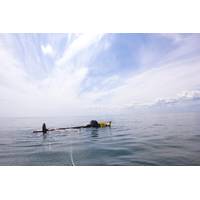
'PowerBuoy' Deployed off New Jersey Coast
in Pennington, N.J. According to OPT, the APB350 A1 contains an improved Power Takeoff (PTO) system compared to the APB350 that was deployed in 2011 in connection with the U.S. Navy's Littoral Expeditionary Autonomous PowerBuoy (LEAP) Program and then redeployed in 2013 in conjunction with the U.S. Department of Homeland Security. George H. Kirby, President and Chief Executive Officer of OPT, commented, "The APB350 is designed to provide a robust and cost effective alternative to incumbent solutions that utilize battery, solar and diesel power. We continue to have interest from potential customers

Stevens Selected as Maritime Research Center of Excellence
Stevens Institute of Technology announced it has been selected as the lead institution for a new Center of Excellence for Maritime Research (CMR). The selection, announced by the U.S. Department of Homeland Security (DHS) Science and Technology (S&T) Directorate will provide Stevens with $2 million per year for five years. The Center will also include the following partner institutions: MIT, University of Miami, Rutgers University, University of Puerto Rico and Elizabeth City State University. Stevens also has new partners with which it will collaborate on research projects, including LSU
 December 2025
December 2025





